Now Reading: Top 10 Best Places to Visit in Lam Dong – Waterfalls, Pine Forests & Colonial Charm
-
01
Top 10 Best Places to Visit in Lam Dong – Waterfalls, Pine Forests & Colonial Charm
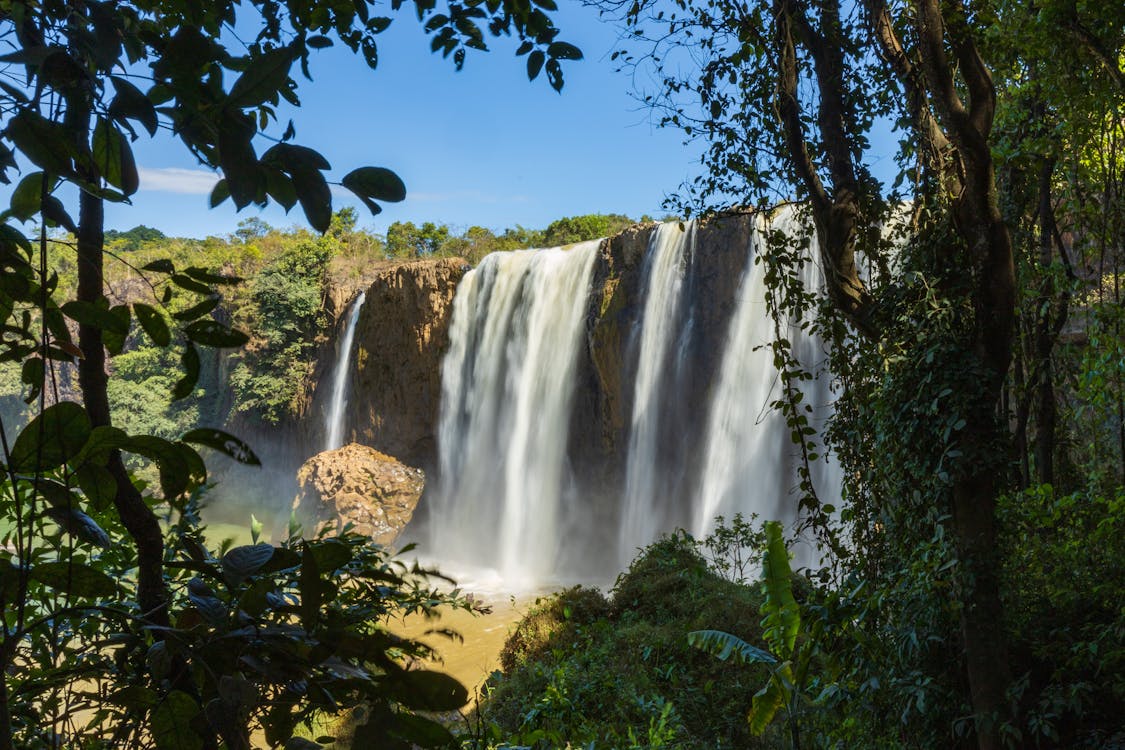
Top 10 Best Places to Visit in Lam Dong – Waterfalls, Pine Forests & Colonial Charm
1.Linh Phuoc Pagoda

The temple known as Linh Phuoc Pagoda or the “Pagoda of Broken Glass” is very well-known in Da Lat for its special architecture and spiritual significance. Instead of the usual design of Buddhist temples, this pagoda is known for its brilliant mosaics, detailed ceramics and a huge dragon made from 12,000 beer bottles.
As you go through the temple, you will be amazed by the 37-meter-high seven-level bell tower which is the tallest of its kind in Vietnam. A huge 8,500 kg bell inside which was made in 1999, encourages visitors to write down their hopes and ring the bell to lift their wishes up into the air.
The dragon’s mouth is the main feature of the pagoda and it contains a statue of the Buddha which stands for enlightenment being born from chaos. Not only is Linh Phuoc a place for worship, but the many tiles, shards and sculptures show the ingenuity and devotion of Vietnamese people.
History and Importance
The temple was built in 1949 and a major reconstruction in 1990 led to its present mosaic pattern. Mixing Buddhist ideas with folk traditions, architecture and recycling has made Vietnamese temples known for modern religious expression.
While the temple is built for the Mahayana Buddhists, it also shows Vietnamese creativity and special meaning. Recycled beer bottles and porcelain in the design of the dragon, besides revealing concern for the environment, also show that great art and beauty can develop out of plain materials.
The biggest temple bell in Vietnam is the giant bell, cast in 1999 and measuring 4.3 meters high and 2.33 meters wide. Visitors usually write their messages and prayers, place them into the bell and softly ring it so their wishes go to the heavens.
Linh Phuoc contains wax figures of respected monks, vivid Buddhist statues and a glass mural, 17 meters long, telling about the life of Shakyamuni Buddha.
- 👍 The place is situated at Trai Mat in Da Lat, Lam Dong Province, Vietnam.
- 🕒 The ideal time to spend is 1–2 hours.
2.Crazy House

Visit the lavish Crazy House (Hang Nga Guesthouse), a place where structures look like they came out of a dream or a work by Salvador Dalí. Crazy House is a tourist spot and an architectural project because it features intricate staircases, endless hallways and rooms that look like trees, caves and animals.
Looking at huge spider webs above the staircases or standing on high “sky bridges” with breathtaking views, you can see both nature-inspired touches and meaningful forms everywhere at Datanla Park.
Its background and its importance
Vietnamese architect Đặng Việt Nga, daughter of Trường Chinh (previously General Secretary of the Communist Party), was responsible for designing the Crazy House. Construction on the project started in 1990 and is still happening today because it keeps developing. After earning her Ph.D. in architecture from the University of Moscow, Đặng Việt Nga came back to Vietnam and decided to use architecture as a form of art and expression.
Blending European influences, the beauty of nature and folk stories of Vietnam, she chose to alter common design styles. Thus, the design reduced the use of straight lines and right angles, adding freeform concrete sculptures that looked like trees, mushrooms, animals and fantasy landscapes.
Although Crazy House was initially met with doubt by some who believed it was radical and different, Crazy House is recognized around the world today. It was shown on CNN, Lonely Planet and listed among the “Top 10 Strangest Buildings in the World” by different architectural and travel websites.
At present, it is used as a museum and a functional guesthouse and its rooms, including the Tiger Room, Eagle Room and Ant Room, are themed after various national or animal characteristics.
- 03 Huynh Thuc Khang Street, Da Lat, Vietnam
- 🕒 It takes about 1–2 hours to see the collection.
🎟️ Tickets:
- Under the driving age: You DON’T need to pay for insurance.
- For people with more than 1.2m and less than 1.4m: 30,000 VND
- Annual income of 1.4m is taxed at 80,000 VND.
- Time: 08:30 AM to 06:30 PM every day
3.Trúc Lâm Monastery of Da Lat

Located on Phụng Hoàng Mountain, above Tuyen Lam Lake, Trúc Lâm Monastery (Thiền Viện Trúc Lâm) is one of the biggest and most honored Zen Buddhist places in Vietnam. In the midst of pine forests and lovely gardens, this place gives a sense of harmony between nature and spiritual ideas.
The complex which is fully functional, lets both monks and tourists enjoy the peace of Zen monastic life. The architecture brings together typical Vietnamese designs and the peacefulness of nature, so it feels right for people to meditate, contemplate and reflect here.
The background and the role of the event
Trúc Lâm Monastery was established in 1994, so it is one of the modern temples in Vietnam. Zen Master Thích Thanh Từ established the Tien Giang Lam Vien Zen Center which is known for his major contributions to Vietnamese Buddhism in the 20th century. He set out to reestablish the Trúc Lâm Yên Tử School of Zen Buddhism which was originally formed in the Trần period in the 13th century.
Living in the present, following a simple life and gaining spiritual understanding through meditation are important in the Trúc Lâm tradition of Zen Buddhism.
Monks, nuns and laypeople alike were guided spiritually here and the monastery was renowned for helping people find peace and inner growth. Nowadays, the site stands for the renewed importance of Buddhism in Vietnam and the rise of spiritual traditions created within the nation.
- Phụng Hoàng Mountain is located in Tuyen Lam Lake, Da Lat, Vietnam.
- The recommended time to spend here is up to 2 hours.
- 🎟️ It is possible to see this exhibit for free.
- The café is open every day from 7:00 AM until 5:00 PM.
4.Dalat Flower Park

At Dalat Flower Park (also called Dalat Flower Garden), you’ll find a rich display of how the city is known for flowers—it’s a kind of living museum of flowers. At the northern edge of Xuan Huong Lake, this garden draws many visitors from nature lovers and photographers.
Spanning over 7 hectares, the park gives visitors well-maintained landscapes, different types of flowers, bonsai trees, cacti and greenhouse displays. Dalat Park is filled with nearly every flower found in the area, including roses, orchids, hydrangeas, mimosa and chrysanthemums which explain why Dalat is known as “Vietnam’s Flower City.”
History and Importance
- For more than 50 years, since 1966, the Dalat Flower Park has grown to be a major attraction worth visiting. The city was built in the early 20th century by the French as a hillside retreat which greatly influenced the development of Dalat. Because of its mild weather, Dalat rapidly became recognized as Vietnam’s top place for growing flowers.
- In 1985, the layout and features of the garden were changed and expanded and people continue to add new types of flowers and improve the garden’s landscaping. Today, the garden shows Dalat’s strong tradition in growing flowers, acts as a place for storing and cultivating different kinds of flowers and provides a major setting for the popular Dalat Flower Festival which attracts travelers worldwide.
- The creation of the park demonstrates the city’s link to floriculture, protects knowledge on old flower-growing methods and also encourages both tourism and better care for nature.
When is the Best Time to Go
Having a mild climate, Dalat’s roses are in bloom year round.
The park is best seen from November to March, especially when Tet (Lunar New Year) falls and the year is a Flower Festival year.
Go early in the day or towards evening for a relaxed setting that is pleasant for photography.
- The location is Tran Quoc Toan Street, Ward 8, Dalat, a short distance from Xuan Huong Lake (to the north).
- The recommended time to visit is 1–2 hours.
- Tickets cost about 50,000 VND (though this does change by season)
- Daily, the store is open from 7:30 AM until 4:00 PM.
5.Xuan Huong Lake

Dalat is sometimes given the nickname “the soul of Dalat” due to Xuan Huong Lake. Winding its way through the heart of the city, this lake forms an area that is relaxing and beautiful for walking, riding a bike, paddle boating or just relaxing. Surrounded by pine trees, green lawns and colorful flowers, peacefulness can be found from every part of the house.
People are always excited about the fresh breezes, carriage rides, boat rides in swan-shaped boats and the beautiful sight of Dalat’s hills. No matter when you go, the lake will impress with its beauty, charming both people who live there and those who are passing through.
The name, significance, history and origin
Xuan Huong lake is a fairly modern addition to the city’s history. In 1919, during the French colonial era, a dam was built on the Cam Ly River by French officials to create a big reservoir in Dalat. It was early designed to make the landscape better and balance the town’s water supply as it grew rapidly.
The name “Xuan Huong” is given to the park to recognize Ho Xuan Huong, an 18th-century Vietnamese poet who wrote freely about her emotions and criticized traditional values. Her name which translates to “Fragrance of Spring,” well represents the tranquil and lovely qualities found across the lake.
Around the lake are some of the city’s main sights: Lam Vien Square, Dalat Flower Park, Cu Hill and Dalat Palace Hotel—meaning it serves as a focus for scenery and culture.
What Makes It Important
Events like festivals, parades and public celebrations usually happen at Xuan Huong Lake, especially during the Dalat Flower Festival and national holidays.
Dalat is famous for its romance and the lake is a key part of that image. A lot of newlywed couples take their photos at this place and it’s usual to see people holding hands as they stroll through.
Just across the road from tourists points, Green Lung of Dalat acts as a considerable green area in town, making the area fresh and attractive all year.
- The place lies within Central Dalat which is found in Lam Dong Province.
- 🕒 A visit to this garden should last about 1 to 2 hours or longer when you want to enjoy a leisurely walk or having a picnic.
- ✍️ Admission is free.
6.Valley of Love

Valley of Love (Thung Lũng Tình Yêu) is a much-loved romantic spot in Vietnam, with pine forests, gardens full of flowers, winding paths, amusing statues and a calm lake in the middle. Many couples, families and people who enjoy taking pictures love the valley for its mix of natural and artistic aspects.
Seeing the swan boats on the water and the heart-shaped arches, the park feels just like a love letter full of bright colors and peaceful moments. Because of its reputation for romance, the Valley of Love is now one of Dalat’s most popular spots for love and dates, even being likened to Vietnam’s Niagara Falls by many.
About Its History and Importance
- The Valley of Love reflects its colonial heritage as well as national feelings of love and pride.
- During the 1930s, when it was still called “Vallée d’Amour” by the French, it became a private and calming place where colonial officers went to admire the beauty.
- With Vietnam facing political change in later decades, the name changed to “Thung Lũng Hòa Bình” (Valley of Peace), demonstrating the country’s wish for unity.
- Managing Vietnamese officials changed the name back to the Son in 1953 to remember its natural beauty and its power to inspire love in every sense.
- Currently, the flower stands for romance, peace and nostalgia and is loved by more than just couples, but also by Vietnamese heritage enthusiasts.
The reasons it matters
A Spiritual Place for Love: Couples, newly marrieds and those marking anniversaries or getting wedding pictures love this as a place to relax together.
It keeps features of French architecture and traditional Vietnamese art, combining different cultures over the years.
It helped put Dalat on the travel map and contributed to its status as “Vietnam’s city of eternal spring” with a romantic appeal.
- The address of Tuyen Lam Lake is Phu Dong Thien Vuong Street, Dalat, Vietnam (about a 6 km drive from the city center).
- Either 2–3 hours or more is the ideal time needed for this lesson.
- Entrance is around 100,000–250,000 VND depending on where you buy the ticket (it has entrance, games, pedal boats and photo spots)
7.Dalat Market

You can buy things at Dalat Market (Chợ Đà Lạt), but it also draws everyone to meet and share experiences. You’ll find Dalat Central Market in the cool hills, where it combines the best sights, scents and dishes.
The market brings together Dalat’s mountain atmosphere with its energetic, city-like culture in the form of crisp vegetables, sweet berries, soft sweaters and aromatic coffee beans. The night market is an extra treat, with stalls selling food, entertainment and the well-known grilled rice paper (bánh tráng nướng), known as “Vietnamese pizza.”
Trying to save money, sample regional food or watch the crowd, Dalat Market provides a unique experience of local living.
History and the Significance
The market was set up in the 1920s under the French colonial government and it began as a simple open-air place for hill tribes and settlers to exchange things.
When Dalat became a popular resort for French officials and wealthy Vietnamese, its market became the main business center, showing the region’s changing culture and economy.
In the 1950s, the market was given a stylish two-story structure. Now it is made up of many indoor and outdoor stalls, where thousands of vendors take part.
For many years now, it has helped define Dalat, not only by offering fresh produce from the area but also by reflecting its community’s strength and willingness to adapt as entrepreneurs.
- 📍 Place: Nguyen Thi Minh Khai Street, Dalat City Center
- 🕓 Working Hours: Shops are open early in the morning and close late in the evening (the night market opens around 5:00 PM)
- In This Shop: Produce, dried fruit, clothes, handcrafted items, souvenirs and street food
8.Elephant Waterfall

Lying within the Central Highlands of Vietnam near Da Lat, Elephant Waterfall (Thác Voi) is known for its spectacular size and misty forest environment.
To get to the base, travelers often go down difficult stone steps and use nearby tree roots to balance themselves, so they can enjoy being close to the waterfall. Because of the beautiful environment and the strength of the water, this spot appeals to fans of adventure and nature.
History and the Significance
The name reflects a story from local people about a group of elephants who tears mourned the death of a mountain girl who was loved by a flute-playing boy from another tribe. Due to their grief, the elephants became stone and turned into the rocks now at the base of the waterfall. The narrative shows the deep ways the region’s people honor their local folklore and the natural world.
This site is important culturally to the K’Ho, an indigenous group in Lam Dong province. People living nearby often have rituals and share oral stories about natural wonders like Elephant Waterfall which they believe are the dwelling places of guardian spirits or nature deities.
Close to the waterfall is the Linh An Pagoda which has a life-sized statue of the Guanyin (Goddess of Mercy).
- Nam Ban Town is located in Lam Ha District, in the Lam Dong Province.
- Less than 1 hour is the duration.
- The town is located ~30 km southwest of Da Lat.
9.Da Lat Night Market

Night falls in Da Lat and the market comes alive with visits by locals and tourists who choose activities, food and fun amid the cool air. Nguyen Thi Minh Khai Street and the nearby streets house a packed market that has many stalls selling everything from produce and handicrafts to food and small souvenirs.
Walking through the market, people dwell in a festive setting with grilled corn, bánh mì and other traditional dishes, along with the conversations of sellers and the laughter of families and friends.
The story and the impact
In the early 1900s, French colonists developed Da Lat as a resort town high in the mountains, so they would experience cooler temperatures. You can still see signs of European influence in the way the city is planned and built which creates a new style that is both Vietnamese and French.
What started as people gathering to sell food in the evenings has, over time, turned into one of the city’s biggest cultural and social destinations. This shows Da Lat turning from a peaceful hill spot to an active place for tourists.
The market exhibits both local ethnic food and the rich harvest from the Central Highlands regions such as several kinds of fresh fruit, vegetables and flowers.
Besides tourism, night markets help local vendors, artisans and farmers by allowing them to sell their products and carry on their traditional pursuits.
- 📍 Da Lat City Center is located in Lăm Đồng Province
- The length of this show is more than 3 hours.
- 🕐 The Best Time for a Visit: Evening Starting at 6 PM
10.Pongour Falls

One of the largest and most exciting waterfalls in Vietnam’s Central Highlands is the Pongour Falls which some call the Seven-Tiered Waterfall. Dropping down many wide rocky terraces, the waterfall is 100 meters wide and drops some 40 meters in height, forming an impressive sight of moving water and green foliage.
In this park, nature lovers find solitude with hiking routes, viewing points and areas dedicated to picnics where the beauty of the falls and forest can be fully enjoyed. The peaceful effect of water falling on the rocks and mist in the air draws people looking for calm and beautiful scenes.
Society and Significance
Pongour Falls is important to the K’Ho people because it is linked to their ancestral tales and acts as a spiritual place. In the past, local people would hold traditional festivals to show respect to nature spirits supposedly near the falls.
Part of the Lam Dong ecological zone, the waterfall supports a high diversity of living things. It maintains the local environment by offering both plants and animals around the forest with water.
Tourism Development: Pongour Falls has come to be one of the biggest tourist sites in the Central Highlands, visited by people from Vietnam and abroad. The area is kept unspoiled so visitors enjoy nature, but it also includes services and viewpoints for their benefit.
The tourism to Pongour Falls helps the nearby communities by providing work through guides, handmade products and hotels which protects their culture and environment.
- The park is approximately 50 km south of Da Lat which is in the Lam Dong Province.
- This concert lasted more than 3 hours.
- The best period to go is during the dry season (December to April) for simpler travel and better views.
Related articles : Top 5 Best Places to Visit in Lạng Sơn – Caves, Temples & Border Landscapes














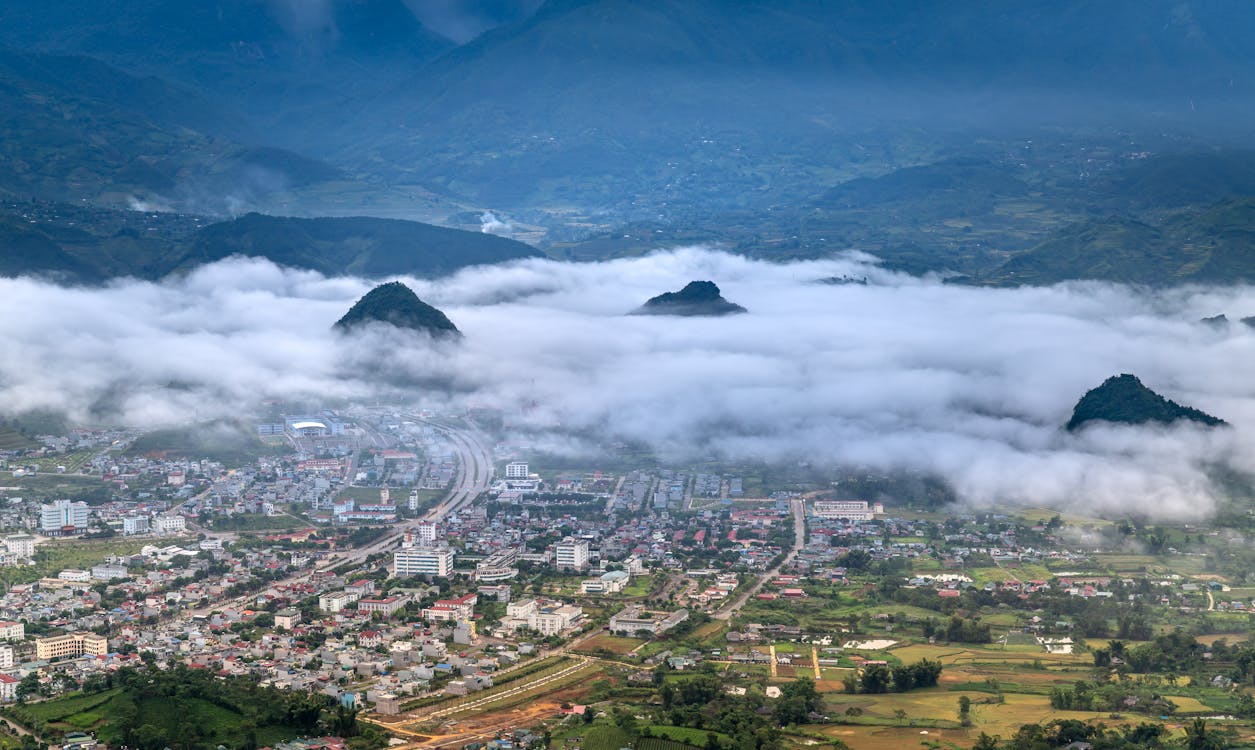
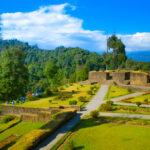
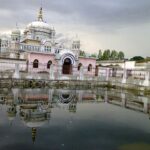
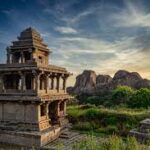
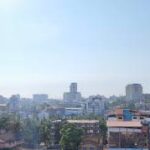
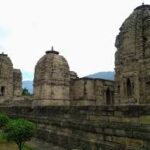
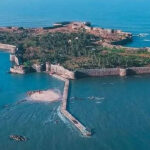

Pingback: Best Places to Visit in Lai Chau – Explore Remote Peaks, Valleys & Hill Tribe Life